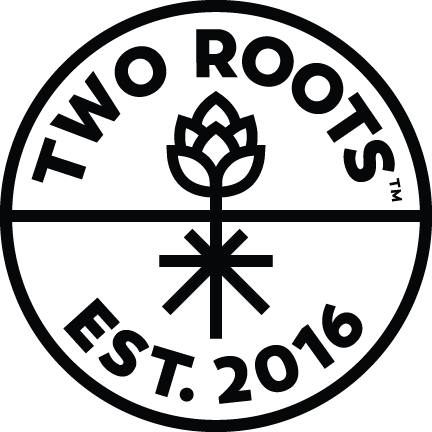Summary – 1 Minute Read.
Lamb’s Bread, a sativa-dominant strain with Jamaican roots and reportedly favored by Bob Marley, is notable for its high THCa content. Unlike THC, THCa is non-psychoactive until heated, making it appealing for therapeutic use without the high. Research suggests Lamb’s Bread THCa has potential anti-inflammatory and neuroprotective properties, beneficial for conditions like arthritis and neurodegenerative diseases. The strain’s terpenoid profile includes myrcene and pinene, which contribute to its aroma and enhance its effects through the entourage effect.
Lamb’s Bread: The Legendary Strain with Therapeutic THCa Benefits
Lamb’s Bread, often referred to as “Lamb’s Breath,” is a sativa-dominant strain that has garnered a legendary status among cannabis connoisseurs. Renowned for its uplifting and euphoric effects, this strain is believed to have Jamaican roots and was reportedly favored by the iconic Bob Marley himself. What sets Lamb’s Bread apart in the realm of cannabis strains is its unique profile of tetrahydrocannabinolic acid (THCa), which presents intriguing possibilities for both recreational and medicinal users.
THCa, the non-psychoactive precursor to THC, has been attracting considerable attention within the scientific community. Unlike THC, THCa does not bind effectively with CB1 receptors in the brain, thus it doesn’t produce psychoactive effects until it undergoes decarboxylation—a process typically achieved through heating. This makes raw or minimally processed forms of Lamb’s Bread particularly appealing for those seeking therapeutic benefits without the high.
One of the most compelling aspects of Lamb’s Bread THCa is its potential anti-inflammatory properties. Emerging research suggests that THCa may interact with COX-1 and COX-2 enzymes, playing a role in reducing inflammation at a molecular level. This could be especially beneficial for patients dealing with chronic pain conditions such as arthritis or fibromyalgia. Additionally, preliminary studies indicate that THCa might possess neuroprotective qualities, potentially offering hope for those suffering from neurodegenerative diseases like Parkinson’s or Alzheimer’s.
In terms of terpenoid profile, Lamb’s Bread boasts an abundance of myrcene and pinene. Myrcene contributes to the strain’s earthy aroma while also enhancing its sedative effects when consumed in larger quantities. Pinene adds a crisp pine scent and has been shown to counteract short-term memory deficits associated with high levels of THC consumption. The synergistic interaction between these terpenes and cannabinoids can create what is known as the entourage effect, amplifying the overall efficacy of the strain.
When considering cultivation practices for maximizing THCa content in Lamb’s Bread, it’s crucial to maintain optimal environmental conditions throughout both vegetative and flowering stages. High-intensity lighting coupled with precise nutrient management can significantly impact cannabinoid synthesis pathways. Growers often employ low-stress training techniques to enhance light penetration and promote even canopy development, ensuring robust trichome production where THCa resides predominantly.
Pro Tip: For those who want to experience Lamb’s Bread at its peak potency without activating THC prematurely, consider juicing fresh leaves or incorporating them into salads—this allows you to harness all the benefits of THCa without any psychoactive side effects.
As demand continues to rise for non-psychoactive cannabinoids, more consumers are looking to Buy THCa products derived from premium strains like Lamb’s Bread. Whether used raw for its purported health benefits or decarboxylated for a more traditional cannabis experience, this strain offers a versatile addition to any aficionado’s repertoire.
Understanding these nuanced elements not only enriches your appreciation but also empowers informed decision-making when selecting among various Buy THCa options available on today’s market.
Frequently Asked Questions (FAQs):
Question: What is Lamb’s Bread known for?
Answer: Uplifting and euphoric effects.
Question: Where does Lamb’s Bread originate?
Answer: Believed to have Jamaican roots.
Question: Who reportedly favored Lamb’s Bread?
Answer: The iconic Bob Marley.
Question: What is THCa?
Answer: Non-psychoactive precursor to THC.
Question: How can you consume THCa without psychoactive effects?
Answer: Juicing fresh leaves or incorporating into salads.
Question: What are the potential benefits of THCa?
Answer: Anti-inflammatory and neuroprotective properties.
Question: Which terpenes are abundant in Lamb’s Bread?
Answer: Myrcene and pinene.
Question: What does myrcene contribute to the strain?
Answer: Earthy aroma and sedative effects in larger quantities.
Question: How can growers maximize THCa content in Lamb’s Bread?
Answer: Optimal lighting, nutrient management, and low-stress training techniques.
Helpful Links:
- Leafly: A comprehensive resource for cannabis strain information, including user reviews and detailed profiles.
- Medical News Today: Offers scientifically-backed articles on the medical benefits of cannabinoids like THCa.
- Project CBD: Provides research-based insights into the therapeutic potential of various cannabinoids, including THCa.
- Royal Queen Seeds: Features cultivation tips and strain-specific growing guides for maximizing cannabinoid content.
- PubMed: A database of peer-reviewed medical studies, useful for exploring the latest research on THCa and its effects.
- High Times: Covers a wide range of cannabis-related topics, from strain reviews to industry news and scientific advancements.
- Cannabis Business Times: Focuses on best practices in cannabis cultivation and business strategies for growers aiming to optimize cannabinoid production.
Definition:
- Lamb’s Bread: A legendary cannabis strain known for its therapeutic benefits, particularly due to its high THCa content.
- THCa: Tetrahydrocannabinolic acid, a non-psychoactive cannabinoid found in raw and live cannabis that offers various therapeutic benefits.





